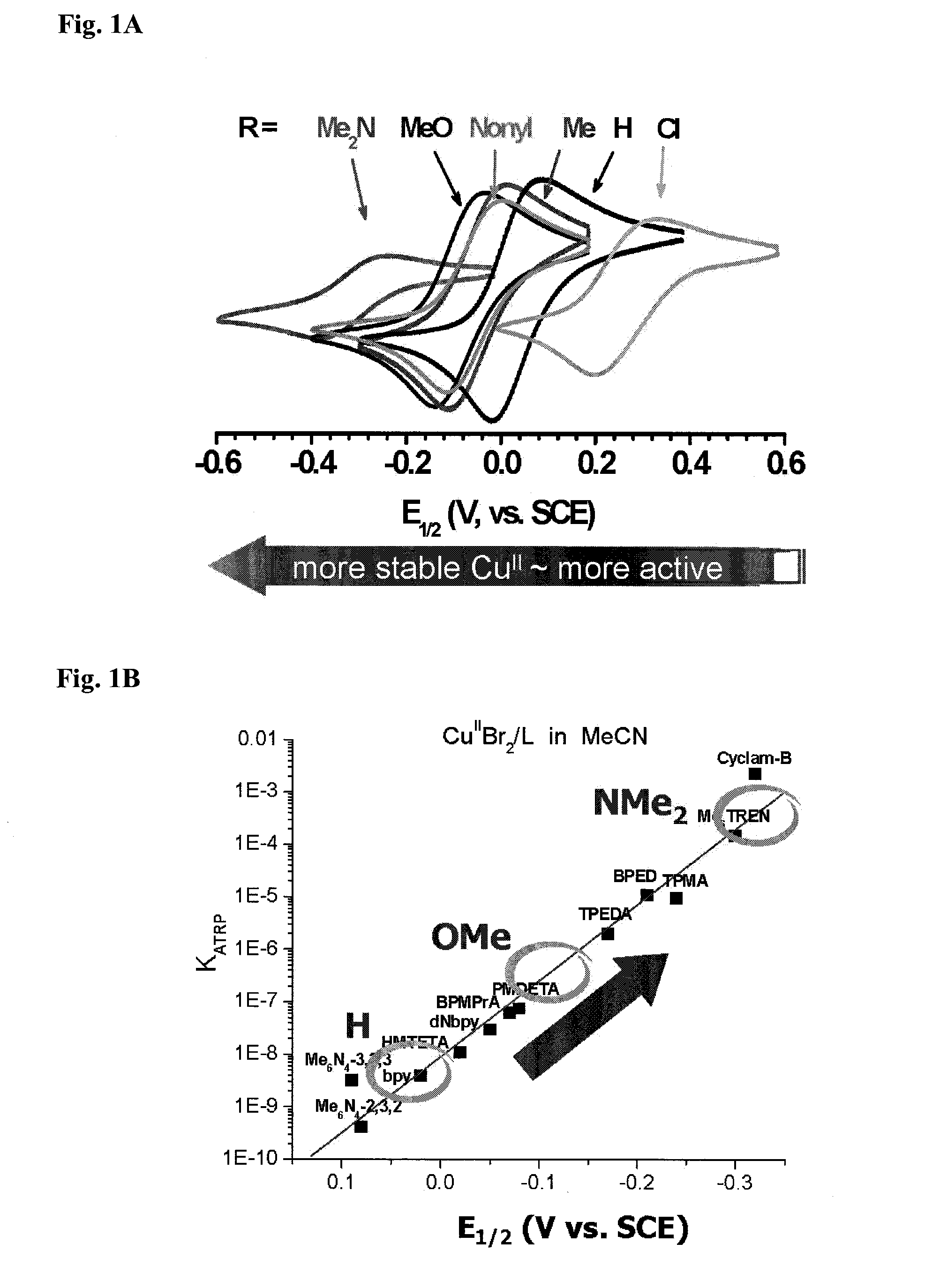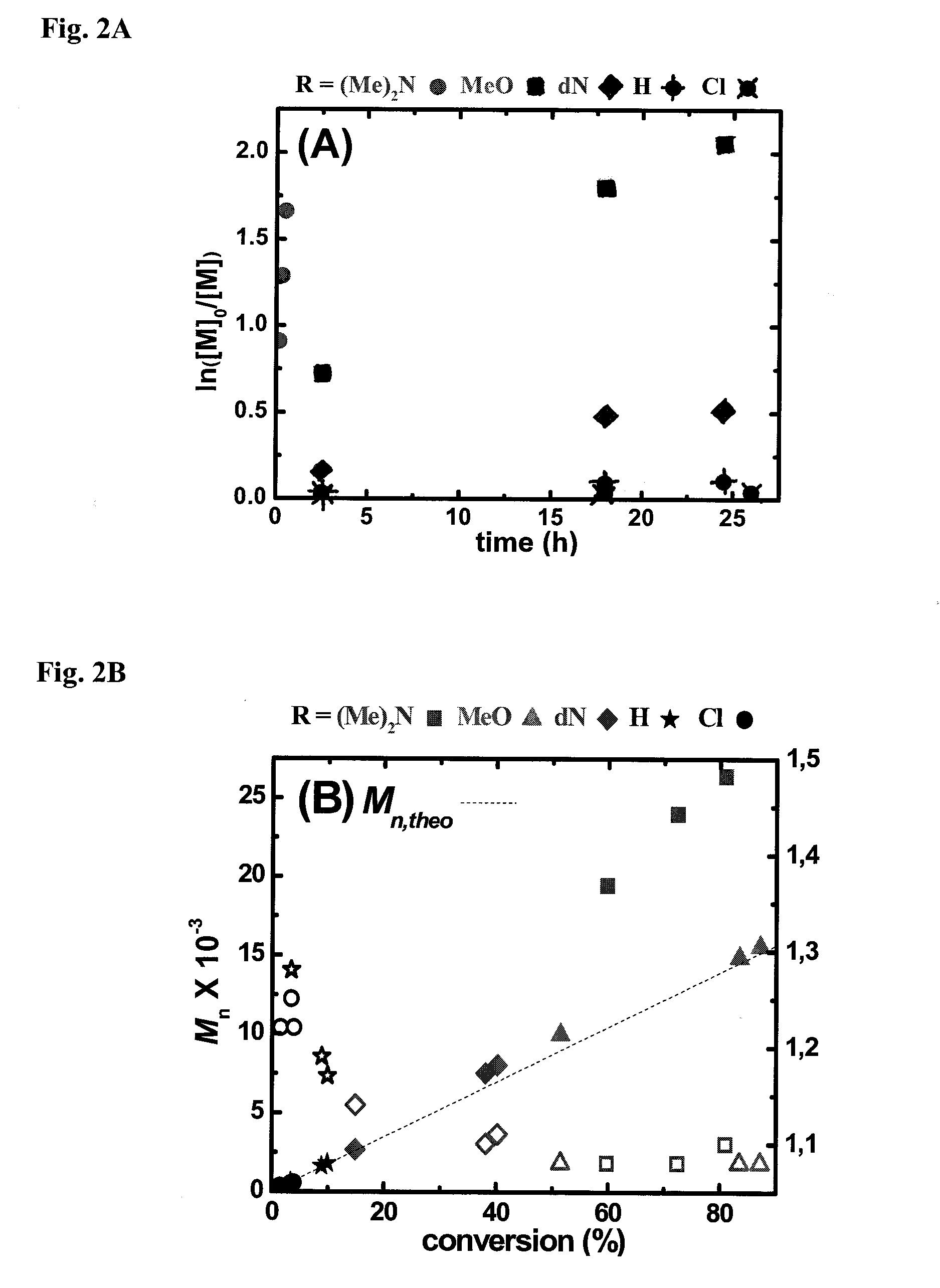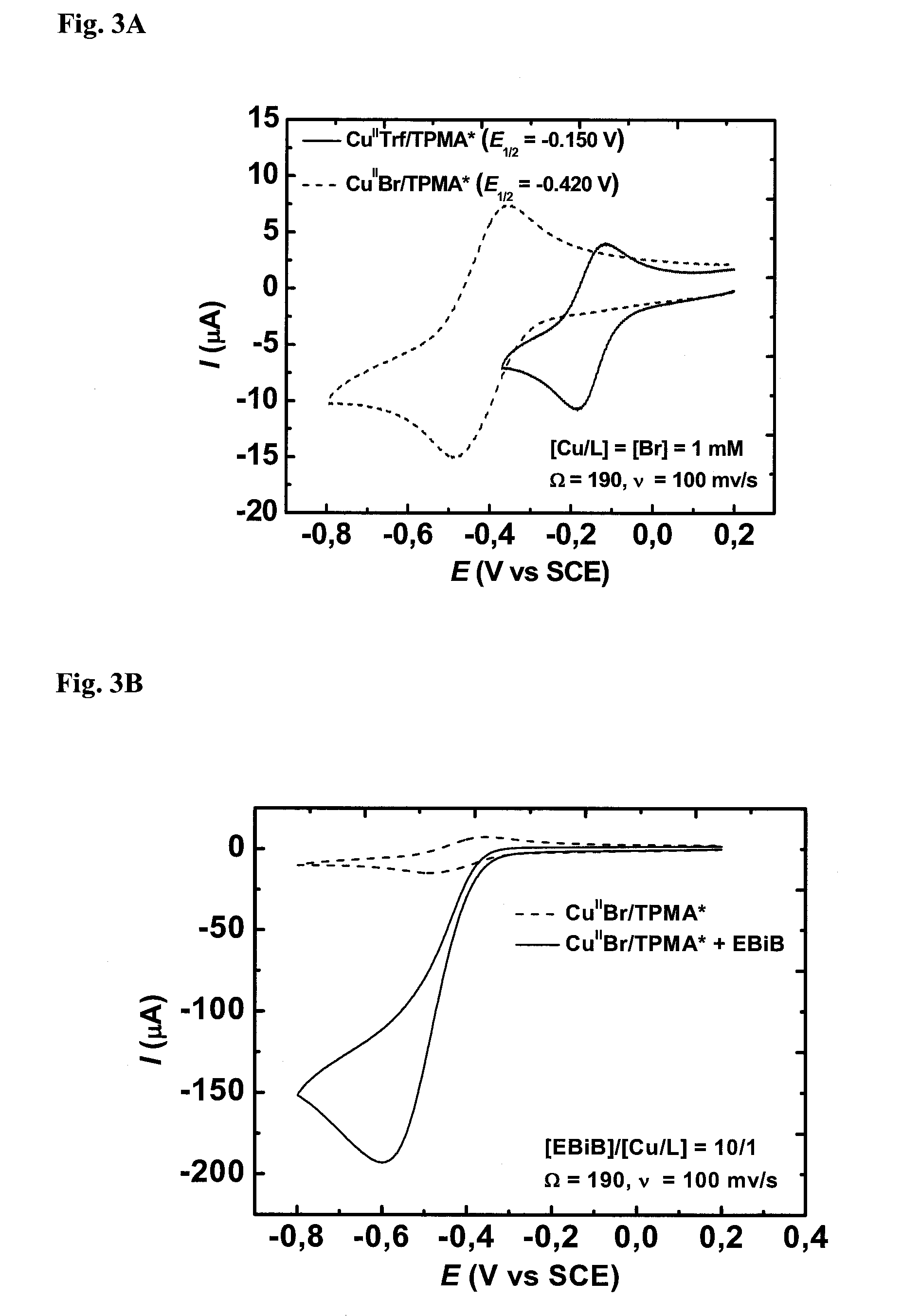Ligands designed to provide highly active catalyst complexes
- Summary
- Abstract
- Description
- Claims
- Application Information
AI Technical Summary
Benefits of technology
Problems solved by technology
Method used
Image
Examples
example 1
Synthesis of 4,4′-(Dimethylamino)-2,2′-Bipyridine
[0101]4,4′-(Dimethylamino)-2,2′-bipyridine (4,4′-(Me)2N-bpy) was prepared in a five step synthesis as shown in Scheme 18. A copy of the 1H NMR of the final product is provided in FIG. 4 and the peaks assigned. 1H NMR (CDCl3) δ 3.12 (s, 12H), 6.54 (dd, 2H), 7.72 (d, 2H), 8.33 (d, 2H). 1H NMR spectra were obtained for all other exemplary ligands discussed herein and the spectra confirmed the expected structures of the ligands.
example 2
Synthesis of Derivatives of TPMA
2A) Synthesis of TPMA*-3
[0102]Step 1) Synthesis of 2-Phthalimidomethyl-4-methoxy-3,5-dimethyl-pyridine. 3.32 g 2-Chlormethyl-4-methoxy-3,5-dimethyl pyridine hydrochloride was dissolved in 30 ml anhydrous DMF. 1.08 g Potassium phthalimide was added and the solution was stirred for 5 minutes. After the addition of K2CO3 the mixture was heated under nitrogen at 85° C. for 19 h and then a sample was analyzed by GC-MS. The solution was allowed to cool to room temp. and an off white solid precipitated of solution after adding saturated NaHCO3. The solid was filtered, redissolved in CH2Cl2, dried over MgSO4 and concentrated in vacuo to give 1.51 g of the pure product as a white solid. 1H NMR and 13C NMR confirmed synthesis of the product.
[0103]Step 2) Synthesis of 2-Aminomethyl-4-methoxy-3,5-dimethylpyridine Anhydrous hydrazine (932.8 mg, 30.54 mmol) was added under a N2 atmosphere to a stirred solution of 2-phthalimidomethyl-4-methoxy-3,5-dimethyl-pyridine...
example 3
ATRP with Low Concentrations of Catalyst with Designed Ligands
3A) ICAR ATRP with Various Members of the TPMA* Family of Ligands
[0123]In light of the expected high rate of polymerization and based on PREDICI® simulation, ICAR ATRP appeared to be a very promising approach for a well controlled ATRP with the novel catalyst Cu / TPMA*-3. Conditions for the polymerizations were taken from PNAS 2006, 103, 15309-15314. The ratio of reagents used in each reaction were: [BA]:[EBiB]:[AIBN]:[TPMA*-X]:[CuCl2]=[160]:[1]:[0.2]:[0.03]:[0.008], with [BA]=5.88M, 20% (v / v) anisole with the ratio of Cu:TPMA*-X held constant=1:3.75, conversion was determined by 1H-NMR, and the reactions were conducted at T=60° C. Table 7 summarize all data obtained for the ICAR ATRP experiments at 50 ppm catalyst loading.
TABLE 7ICAR ATRP of BA conducted with 50 ppm catalyst loading forTPMA and all TPMA* derivatives listed in Schemes 6 and 7:Conv.(4 h)TimeLigand[a][%][h]Mn, theo[b]Mn, GPCMw / MnTPMA384800082301.67TPMA*-187....
PUM
| Property | Measurement | Unit |
|---|---|---|
| Fraction | aaaaa | aaaaa |
| Fraction | aaaaa | aaaaa |
| Fraction | aaaaa | aaaaa |
Abstract
Description
Claims
Application Information
 Login to View More
Login to View More - R&D
- Intellectual Property
- Life Sciences
- Materials
- Tech Scout
- Unparalleled Data Quality
- Higher Quality Content
- 60% Fewer Hallucinations
Browse by: Latest US Patents, China's latest patents, Technical Efficacy Thesaurus, Application Domain, Technology Topic, Popular Technical Reports.
© 2025 PatSnap. All rights reserved.Legal|Privacy policy|Modern Slavery Act Transparency Statement|Sitemap|About US| Contact US: help@patsnap.com



